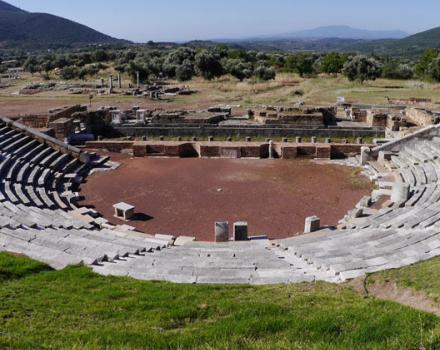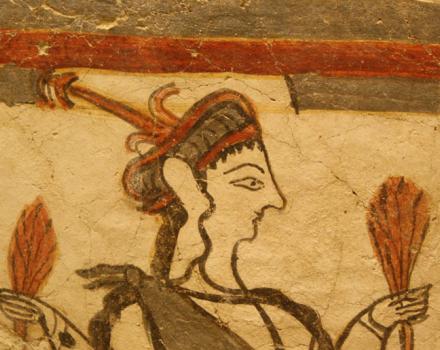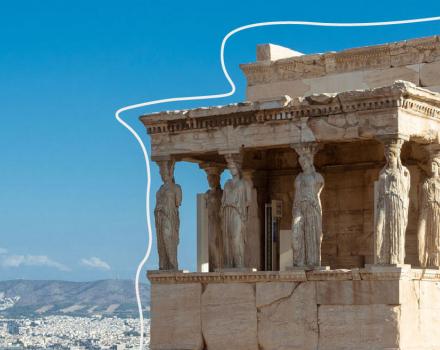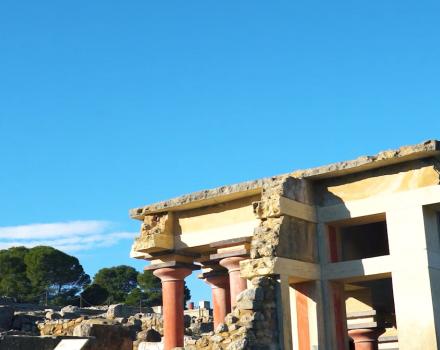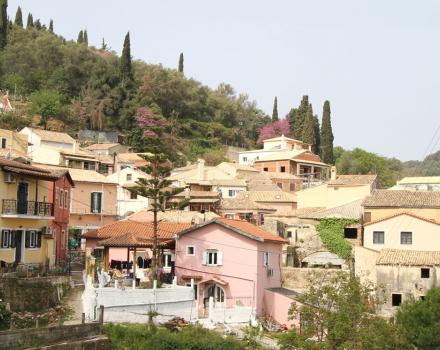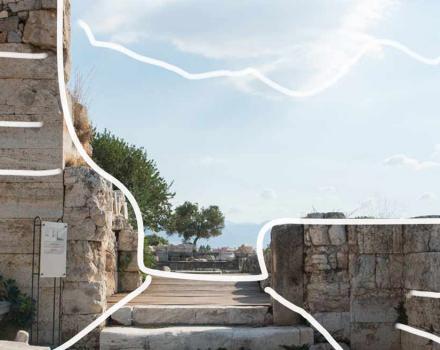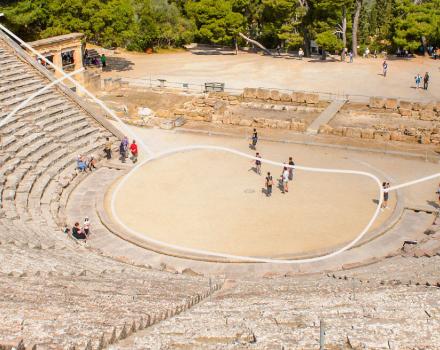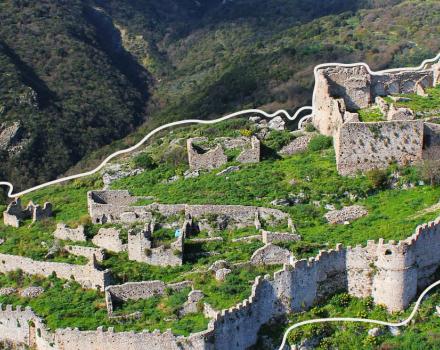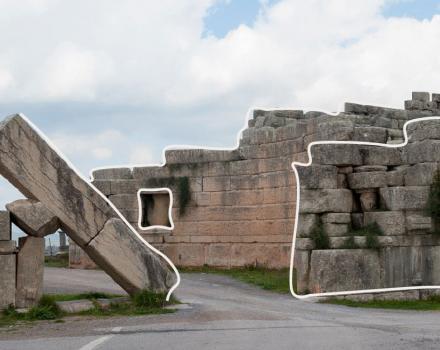How was the Acropolis of the 5th c. B.C., when Athens was a protagonist at a political, military and artistic level? The visitors of “Tholos” at the “Hellenic Cosmos” Conventional & Cultural Center travel virtually to this brilliant period, through the new production “Interactive Tour of Acropolis during Pericles’ Age” of the Foundation of the Hellenic World. The visitors, passengers in an impressive time capsule, see in a 3D reconstruction of all the “Sacred Rock” buildings with their architectural and colorful details. Those that were saved together with those that were lost are all masterpieces of the classical architecture. The famous sculptures that adorn them were also presented with the colors of that time.
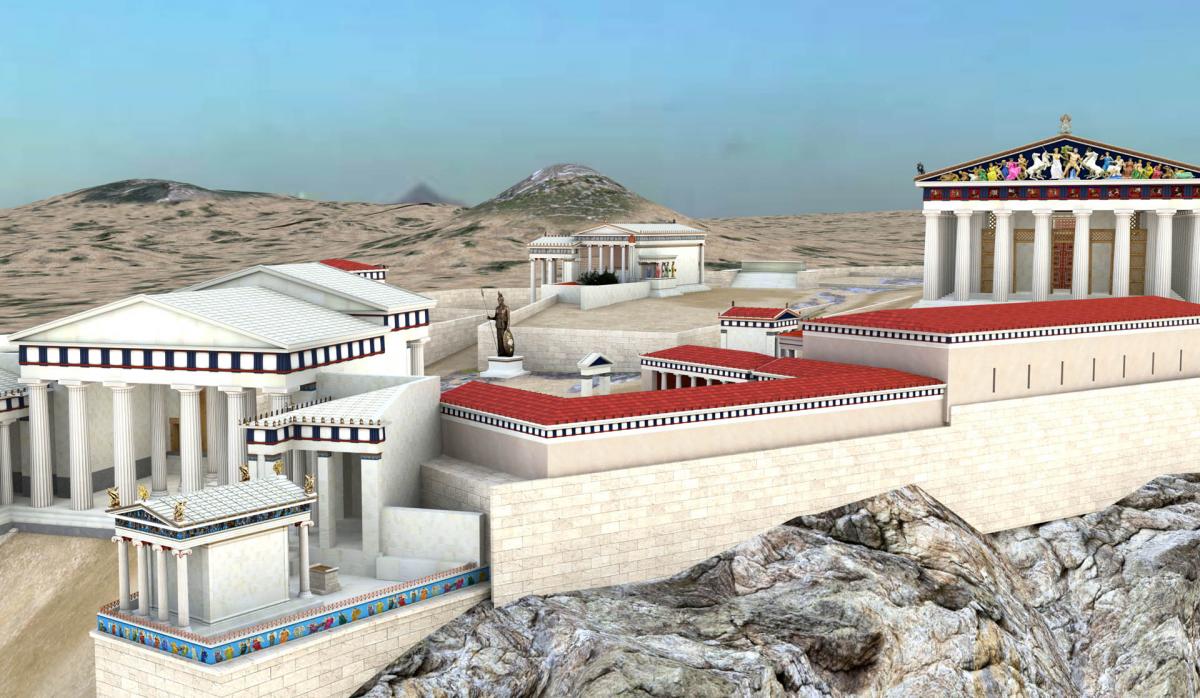
From the monuments still standing, guests are welcomed by the Propylaia, which were built by the architect Mnesikles (437-432 B.C.) and, while it was an entrance building, it had the brilliance of a temple. Southwest of the Propylaia is the temple of Athena Nike in the Ionic order and with excellent proportions, built by the architect Kallikrates. It was built between 426 - 421 B.C. and was related to the worship of goddess Athena as a supporter to the Athenians in wars.
"The visitors, passengers in an impressive time capsule, see in a 3D reconstruction all the buildings of the Acropolis with their architectural and colorful details.
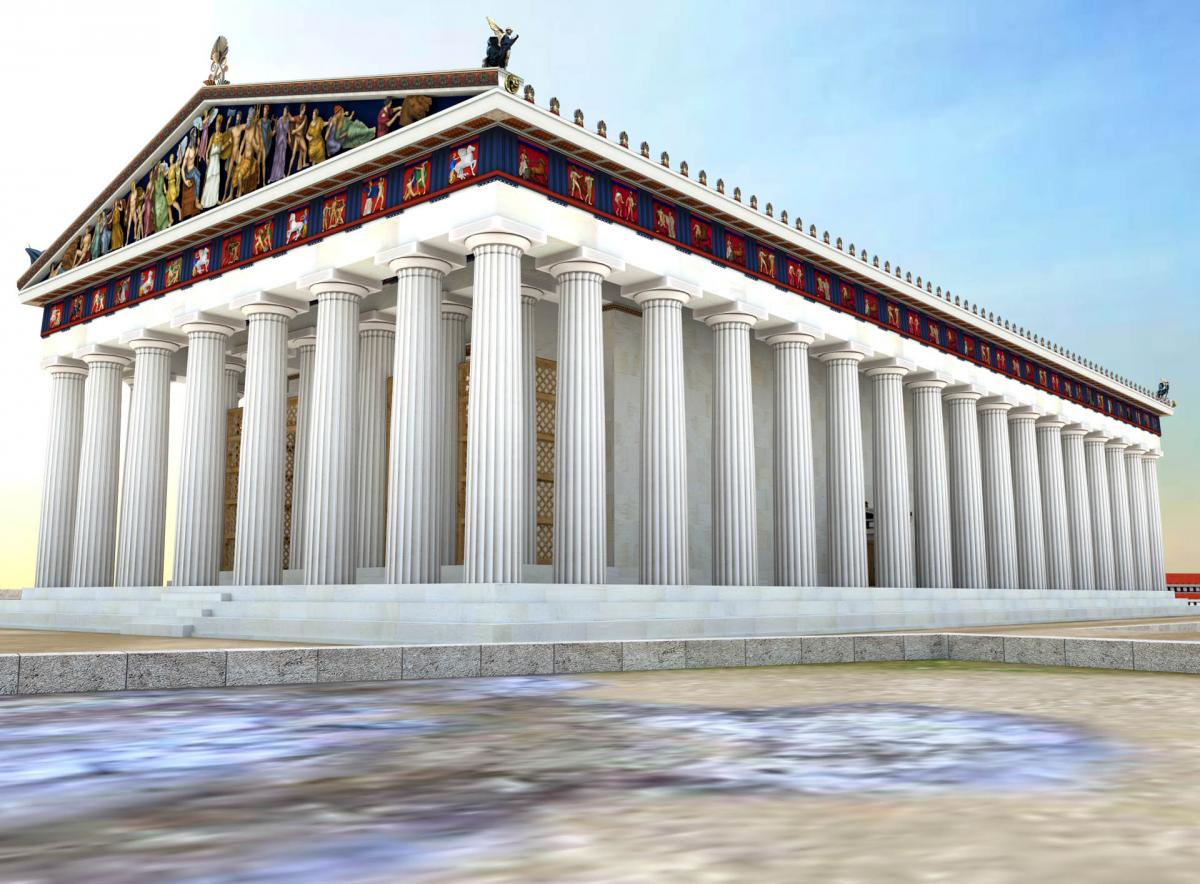
With the colors of their period At the Erechtheion, Caryatids steal the show, surprising the viewer with their colorful garments. The Erechtheion, a brilliant example of the mature Ionic order, was a temple of multiple function in which the eastern section was devoted to the worship of Athena Polias and the western one, to Poseidon Erechtheus. It was considered the most sacred site on the Acropolis, as the traces of Poseidon's trident and the ancient wooden statue of Athena was kept here, which the Arrhephoroi draped with peplos every four years during the Panathenaic festival.
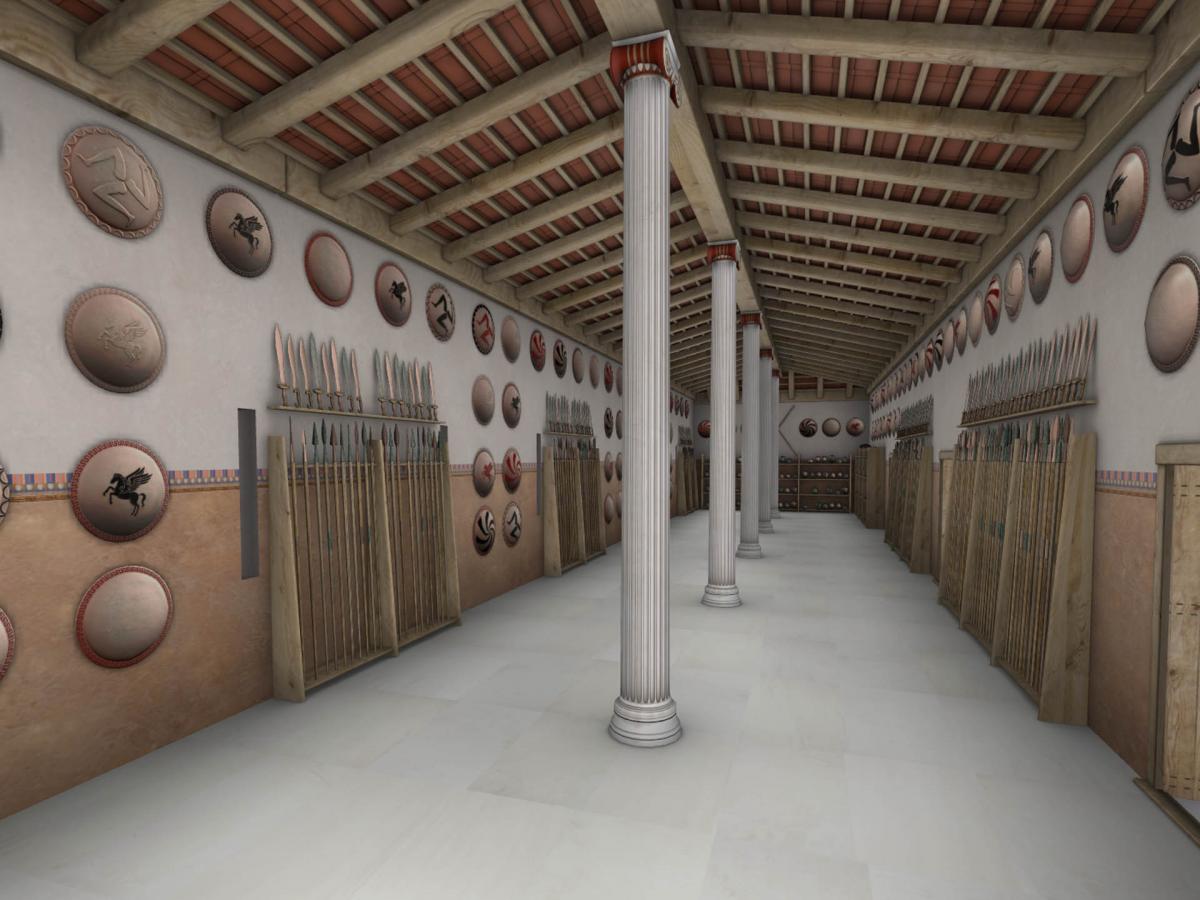
The Parthenon, the most magnificent creation of Athenian democracy at the time of its peak, appears to be whole, confirming its reputation as an insuperable masterpiece for its architectural and sculptural wealth. Built by Pentelic marble, the temple was constructed between the years 447-438 B.C. by the architects Iktinos and Kallikrates, while sculptor Pheidias was in charge of the whole project. On the outside of the temple, the spectator is surprised by the bright colors of the sculptural decoration, while in the interior he sees how was a famous artwork that did not survive: the 13.5-meter-long chryselephantine statue of Athena, crafted by Pheidias.
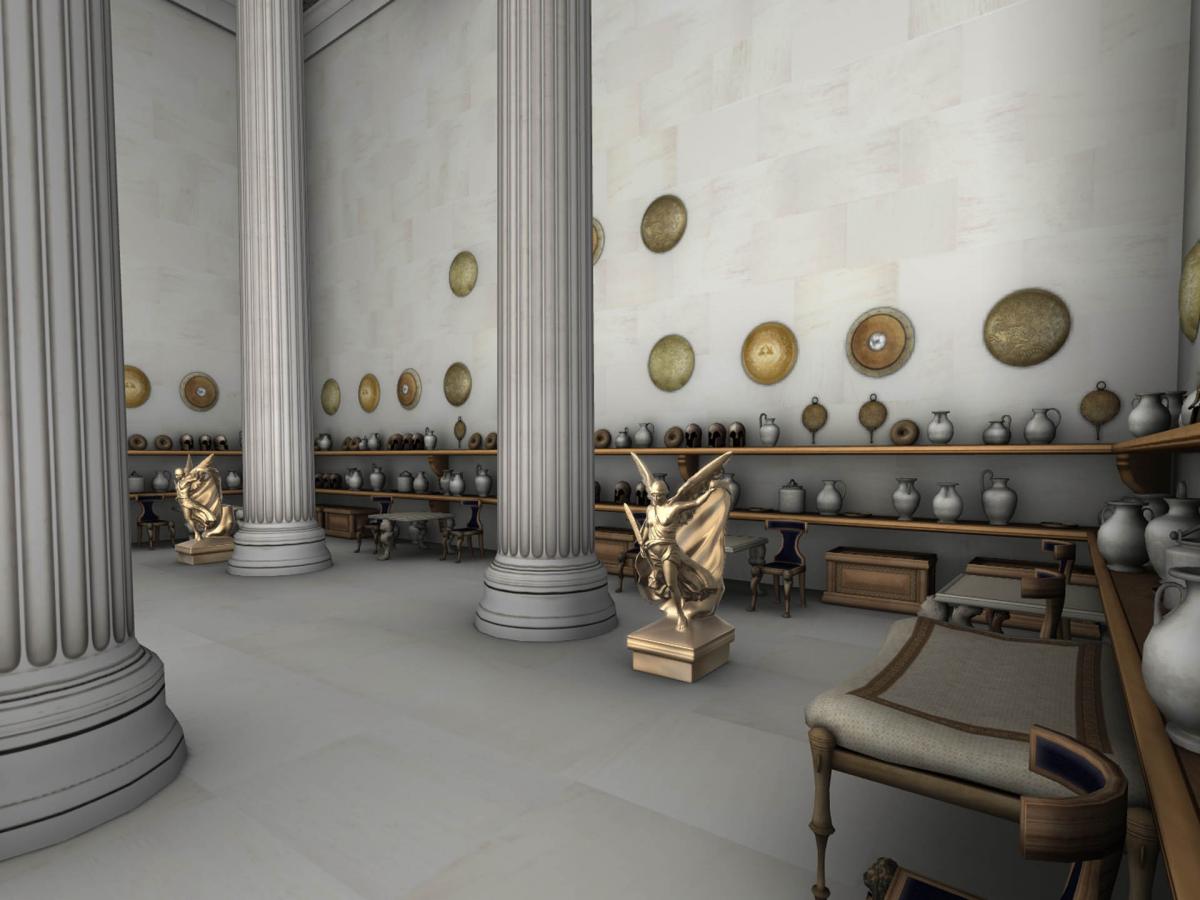
Statues and buildings that didn’t survive
Besides the above artwork, other statues and buildings of the Acropolis that didn’t survive are being presented in the virtual tour. The spectator understands why the bronze statue of Athena Promachos also an artwork of Pheidias, impressed. For its construction, Athenians provided dekate (1/10) from their spoils of the victory against the Persians in the Battle of Marathon (490 B.C.). Built around 470 B.C., the statue was 12m high and, according to the traveler Pausanias (2nd century A.D.), the crest of the goddess was visible to the passengers of the ships coming from Sounio to Piraeus.
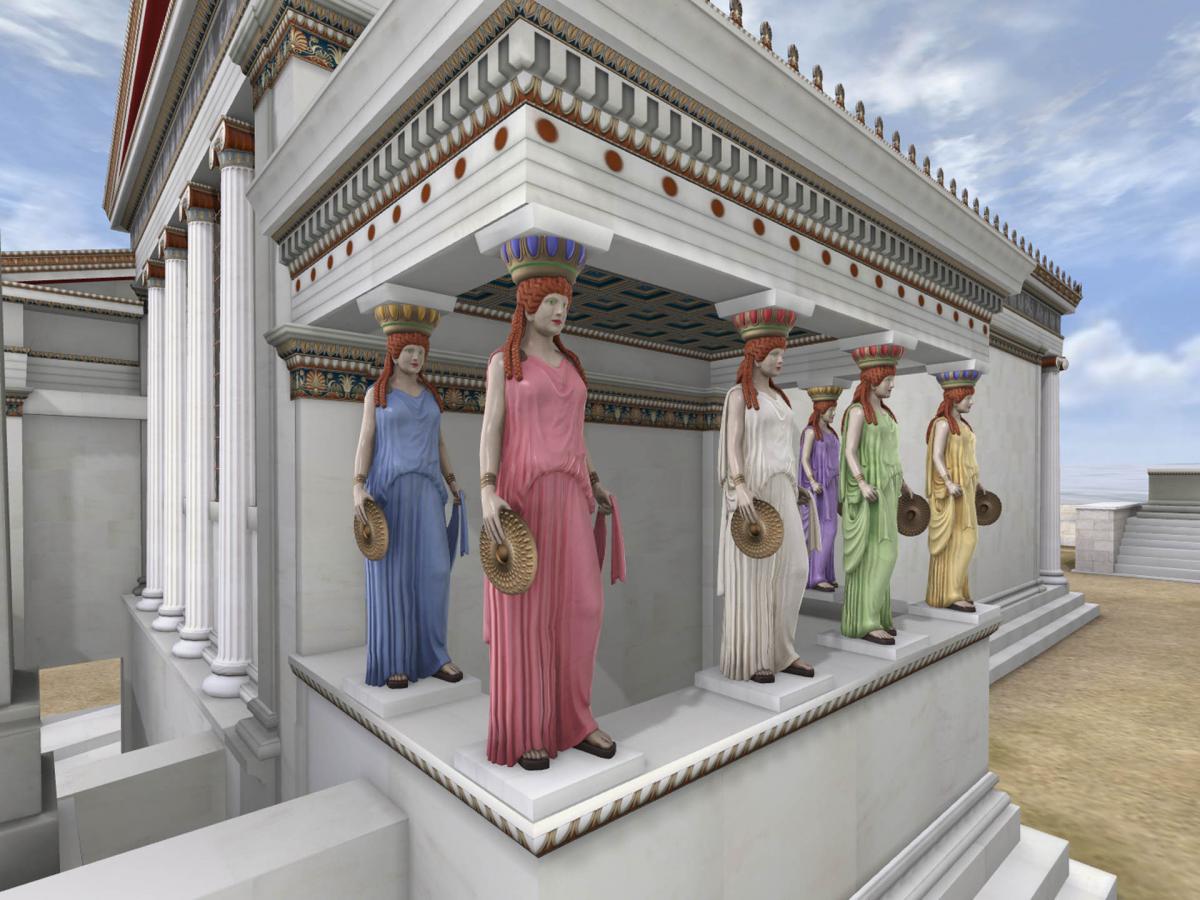
As for the buildings that didn’t survive, one of them was the Arrephorion, the house of the Arrhephoroi, the two little girls who were chosen to weave the peplos of Athena. Its doors are widely open, revealing the beds and the place where the girls played ball at school time. The sanctuary of Artemis Brauronia is considered to be an annex to the Great Sanctuary of the goddess in Brauron. Its foundation dates back to the mid-6th c. B.C. and is attributed to the tyrant Peisistratus who originated from Brauron and one of the two statues of the goddess kept inside the temple was, according to Pausanias, an artwork by Praxiteles.
"The statue of Athena Promachos was impressing during antiquity, as the crest of the goddess was visible to the passengers of the ships coming from Sounio to Piraeus
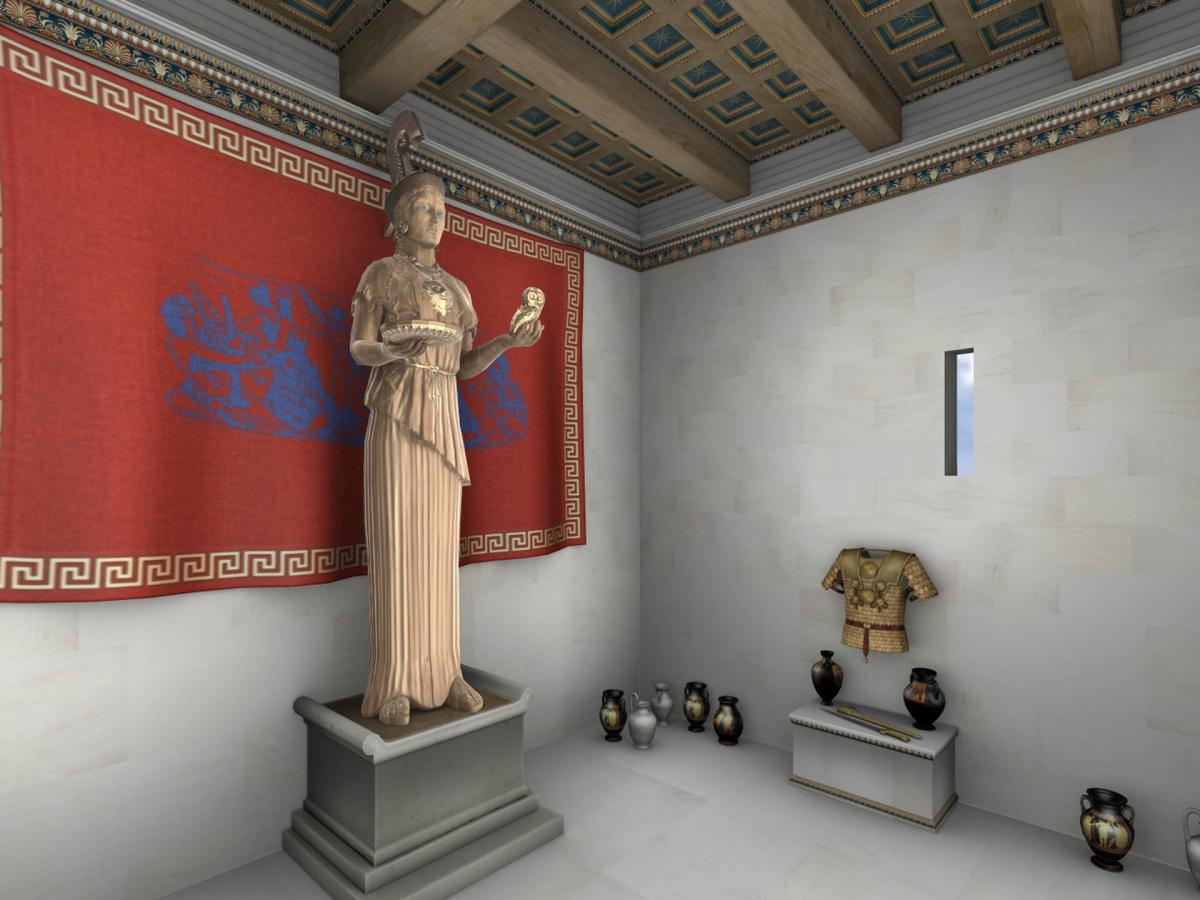
In the interior of the Chalkothekee, among the Athenian votives that were considered as property of the goddess Athena, the spectator sees shields and spears. Built along the southern wall of the Acropolis, the elongated building was constructed in the middle of the 5th c. B.C.

The virtual trip ends with a major building of the post – classical Acropolis: the Herod Atticus Odeon, which dominates the western edge of the southern slope of the Acropolis. Donation of the Athenian philosopher Herodes Atticus, in memory of his beloved wife, Regilla, the theater was built in the 2nd c. A.D. and was an extremely expensive construction. A distinctive image is that of its roof, which has no internal supports, and remains even for today's time, a structural achievement.
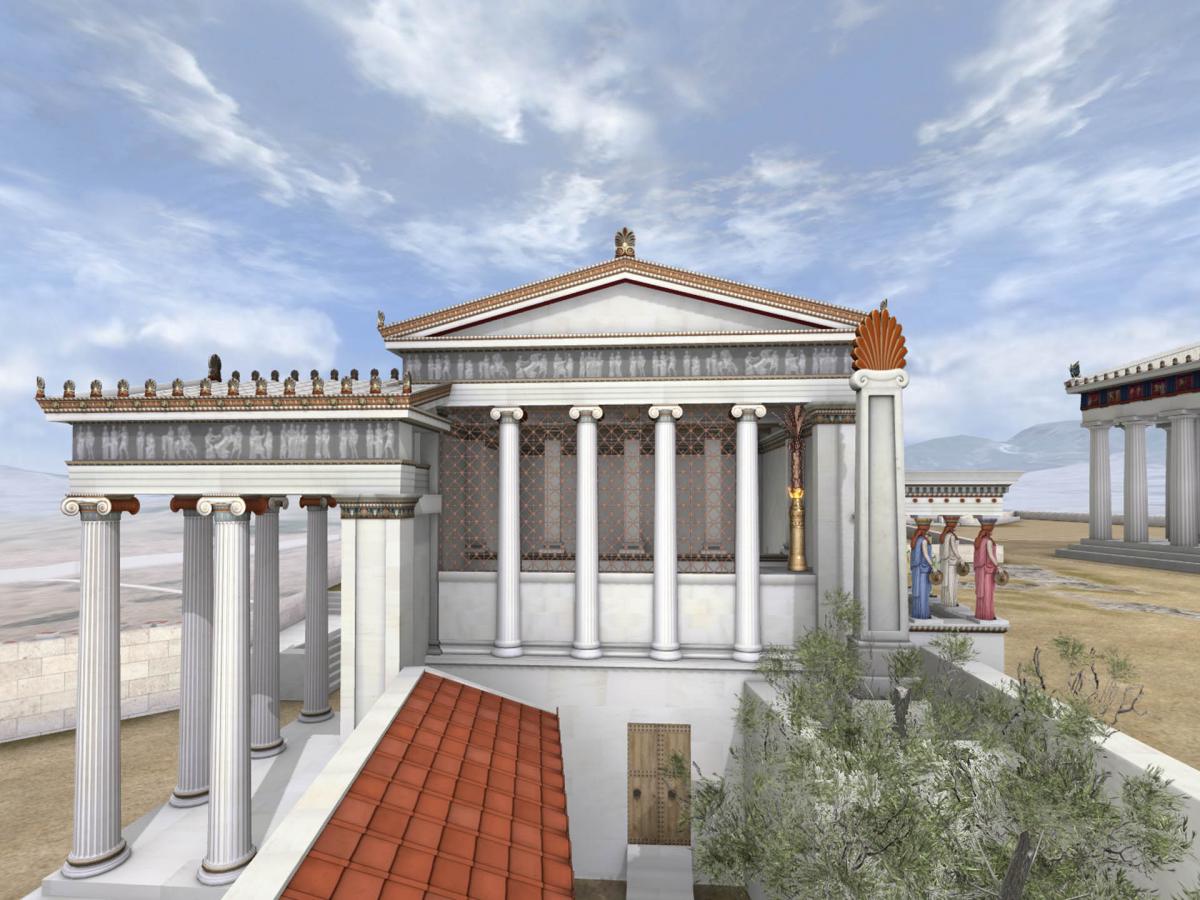
Three –dimensional modelsThe three-dimensional models of each building were made by expert groups, painters, 3D modelers, programmers and archaeologists. Panos Valavanis, the Professor of Classical Archeology at the National and Kapodistrian University of Athens also participated in the production of the project. Afterwords, the scientists of the Foundation of the Hellenic World adapted the projection to the needs of the "Tholos", offering the visitors of "Hellenic Cosmos" another shocking experience. The spectator walks through the brilliant temples while learning the history of the "Sacred Rock" thanks to the “live” tour by the museum educators of the Foundation of the Hellenic World.
Information: “Hellenic Cosmos” Conventional & Cultural Center, “Tholos”, 254 Peiraios Street, Tavros, Athens, film information days and hours: www.hellenic-cosmos.gr & www.tholos254.gr.

